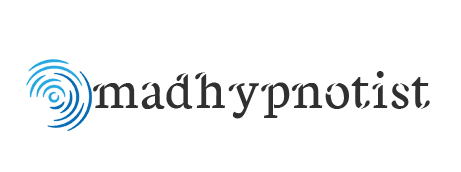Hypnosis Induction Techniques
10 Best Self-Hypnosis Techniques for Beginners
March 15, 2016 - Hypnosis Induction Techniques
Discover powerful self-hypnosis techniques like visualization, progressive muscle relaxation, and positive affirmations for beginners. Try guided imagery, the eye fixation method, anchoring techniques, and the time distortion method to enhance your practice. Explore self-hypnosis scripts and convenient apps tailored to your needs. Unleash your potential for profound personal growth and inner peace with these effective methods.
Visualization Techniques

Utilizing visualization techniques is an essential aspect of mastering the art of self-hypnosis for beginners. Creative visualization involves creating vivid mental images to manifest dreams and goals. By engaging in imagery exercises, individuals can enhance their self-hypnosis practice and increase the likelihood of achieving their desired outcomes.
In self-hypnosis, creative visualization plays a pivotal role in programming the subconscious mind. Through visualization, individuals can mentally rehearse specific scenarios, such as giving a successful presentation or overcoming a fear. By repeatedly visualizing these scenarios with detail and emotion, one can condition the mind to respond in a positive and empowered manner when faced with similar real-life situations.
Moreover, creative visualization can aid in clarifying goals and intentions, making them more tangible and achievable. By consistently visualizing oneself already attaining a goal, individuals can boost their motivation and confidence levels, ultimately increasing the likelihood of success.
In essence, mastering visualization techniques is a powerful tool in the arsenal of self-hypnosis for beginners looking to harness the power of their subconscious mind.
Progressive Muscle Relaxation
In the realm of self-hypnosis techniques for beginners, mastering the practice of Progressive Muscle Relaxation holds significant value. This technique focuses on the mind-body connection, aiming to reduce stress and induce a deep state of relaxation.
Progressive Muscle Relaxation involves sequentially tensing and then relaxing different muscle groups in the body, promoting the relaxation response and releasing tension.
By consciously tensing and releasing muscles, individuals can heighten their awareness of bodily sensations and learn to differentiate between tension and relaxation. This heightened awareness can help in identifying and releasing stored tension in the body, leading to a more profound state of relaxation.
The relaxation response triggered by Progressive Muscle Relaxation can have a calming effect on the mind, reducing stress and promoting a sense of well-being.
Through regular practice, beginners can improve their ability to relax both physically and mentally, making Progressive Muscle Relaxation a valuable tool in the practice of self-hypnosis for stress reduction and overall well-being.
Positive Affirmations

Positive affirmations play a crucial role in enhancing self-hypnosis practices for beginners by nurturing a mindset of empowerment and positivity. Affirmation power lies in the ability to reframe negative thoughts into positive ones, thus reshaping one's beliefs and attitudes.
When integrated into self-hypnosis sessions, positive affirmations can act as anchors for desired outcomes, reinforcing the subconscious mind with constructive messages.
One of the key benefits of incorporating positive affirmations into self-hypnosis is the self-confidence boost they provide. By regularly affirming one's capabilities, strengths, and potential, individuals can cultivate a more resilient and optimistic outlook on life. This newfound self-assurance can translate into increased motivation, improved self-esteem, and a greater sense of self-belief.
For beginners embarking on their self-hypnosis journey, establishing a repertoire of personalized positive affirmations can be transformative. By harnessing the power of affirmations to instill confidence and positivity, individuals can pave the way for meaningful personal growth and self-improvement.
Guided Imagery
An effective tool in self-hypnosis practices for beginners is the incorporation of guided imagery techniques. Guided imagery involves creating a detailed mental picture or scenario to stimulate specific thoughts, feelings, or sensations.
Through creative visualization, individuals can imagine themselves in relaxing or empowering situations, harnessing the power of the mind to induce a state of deep relaxation and focus.
Guided imagery often includes sensory immersion, where practitioners engage multiple senses to enhance the vividness and realism of the imagined experience. By incorporating sights, sounds, smells, tastes, and tactile sensations into the visualization process, individuals can deepen their hypnotic state and strengthen the mind-body connection.
When utilizing guided imagery in self-hypnosis, beginners can choose scenarios that promote relaxation, confidence, or personal growth. Whether envisioning a peaceful beach scene, visualizing successful outcomes, or rehearsing positive affirmations through vivid imagery, this technique offers a versatile and powerful tool for enhancing self-hypnosis sessions.
Eye Fixation Method

One effective technique utilized in self-hypnosis practices is the Eye Fixation Method, which involves focusing the gaze on a specific point to induce a state of relaxation and concentration. This method, also known as candle gazing, triggers the relaxation response by directing the eyes to a single, stationary object, such as a candle flame. By concentrating on this focal point, distractions fade away, promoting a sense of calm and heightened awareness.
The Eye Fixation Method draws on principles similar to focus meditation and mindfulness practices. Just as in mindfulness, where attention is centered on the present moment without judgment, eye fixation encourages a singular focus that can quiet the mind and enhance concentration.
This technique can be particularly beneficial for beginners in self-hypnosis as it provides a tangible point of concentration to anchor the mind. Through regular practice, individuals can strengthen their ability to enter a hypnotic state more effortlessly, paving the way for deeper self-exploration and personal growth.
Breathing Exercises
Utilizing controlled breathing techniques is a foundational aspect of self-hypnosis that aids in inducing a state of relaxation and focus. Diaphragmatic breathing, also known as deep breathing, is a common method used in self-hypnosis to activate the body's relaxation response. This technique involves breathing deeply into the belly, allowing the diaphragm to fully expand and contract.
By focusing on the sensation of the breath entering and leaving the body, individuals can enhance their mindfulness meditation practice during self-hypnosis sessions.
The relaxation response triggered by diaphragmatic breathing helps reduce stress, lower heart rate, and promote a sense of calmness, making it easier to enter a hypnotic state. Practicing deep breathing exercises regularly can improve one's ability to enter a state of self-hypnosis more effectively.
Self-Hypnosis Scripts

When practicing self-hypnosis, utilizing self-hypnosis scripts can provide structured guidance and support in achieving desired outcomes. These scripts often include hypnotic inductions to help you enter a relaxed state, deepening techniques to enhance the hypnotic experience, and suggestions for subconscious reprogramming to assist in achieving self-improvement goals.
Hypnotic inductions are used at the beginning of a self-hypnosis session to help you relax and focus your mind. Common inductions include progressive muscle relaxation and visualization exercises.
Deepening techniques, such as counting down from ten or imagining descending stairs, can deepen your state of relaxation and receptiveness to suggestions.
Self-hypnosis scripts also incorporate suggestions for subconscious reprogramming. These suggestions are tailored to your specific self-improvement goals, whether it be boosting confidence, overcoming fears, or improving habits.
Anchoring Techniques
Implementing anchoring techniques in self-hypnosis involves creating powerful associations between specific triggers and desired emotional or behavioral states to enhance the effectiveness of the practice. By using emotional triggers and memory association, individuals can establish connections between certain stimuli and the intended mental state.
For example, a person may choose to anchor feelings of calmness and relaxation with a gentle touch on their wrist. Through repetition and reinforcement, this touch becomes linked with the desired emotional state, allowing the individual to access it more easily during self-hypnosis sessions.
Emotional triggers play a crucial role in anchoring techniques, as they help evoke specific feelings or responses when activated. These triggers can range from physical sensations to visual cues or even specific words or phrases. Memory association further strengthens these anchors by linking them to past experiences or learned behaviors, making the connection more profound and impactful.
Time Distortion Method

How can the time distortion method be applied in self-hypnosis to alter perceptions of time and enhance the depth of hypnotic experiences?
By incorporating mindfulness practice into self-hypnosis sessions, individuals can focus their attention on the present moment, leading to an altered perception of time. This altered perception can create a sense of time dilation or contraction, allowing for a deeper immersion into the hypnotic state.
Cognitive restructuring is another key element in utilizing the time distortion method effectively. By challenging and reframing beliefs about time during self-hypnosis, individuals can open themselves up to new temporal experiences. This process can help individuals let go of rigid concepts of time and embrace a more fluid understanding, enhancing the overall hypnotic experience.
Furthermore, the time distortion method can trigger the relaxation response in the body, promoting a state of deep relaxation and receptivity to hypnotic suggestions. This relaxed state can further amplify the effects of self-hypnosis, leading to profound changes in behavior and mindset.
Self-Hypnosis Apps
Self-hypnosis apps offer convenient and accessible tools for individuals to engage in self-hypnosis practices anytime and anywhere. These apps often feature a variety of guided self-hypnosis sessions tailored to specific needs, such as stress reduction, confidence building, or overcoming phobias.
Additionally, many self-hypnosis apps incorporate techniques like mindfulness meditation to help users achieve a state of deep relaxation and focus.
For those looking to improve their sleep quality, self-hypnosis apps can be particularly beneficial. These apps typically offer guided sessions designed to promote relaxation and alleviate insomnia symptoms. By incorporating self-hypnosis practices into their bedtime routine, individuals may experience improved sleep patterns and overall sleep quality.
Frequently Asked Questions
Can Self-Hypnosis Techniques Help With Overcoming Phobias or Fears?
Self-hypnosis techniques can be effective in fear reduction, boosting self-confidence, relieving anxiety, and managing stress. By tapping into the subconscious mind, individuals can address phobias and fears, leading to positive behavioral changes and improved mental well-being.
Is It Possible to Use Self-Hypnosis to Improve Athletic Performance?
Utilizing self-hypnosis can indeed enhance athletic performance by fostering mental focus through techniques like visualization. It aids in confidence building and facilitates a positive mindset shift, enabling athletes to tap into their full potential.
Are There Specific Self-Hypnosis Techniques for Enhancing Creativity?
When aiming to enhance creativity through self-hypnosis, individuals can explore techniques that focus on boosting imagination and enhancing innovation. By incorporating visualization, positive affirmations, and relaxation methods, one can tap into their creative potential effectively.
Can Self-Hypnosis Be Used to Manage Chronic Pain or Medical Conditions?
Self-hypnosis is a validated method for pain management, offering a non-invasive approach to alleviate chronic pain and enhance healing. Research suggests that self-hypnosis can be effective in reducing pain perception and improving overall well-being.
How Long Does It Take to See Results From Practicing Self-Hypnosis Techniques?
The effectiveness of self-hypnosis may vary among individuals, with benefits typically manifesting gradually. Results can be noticed in a few sessions, but significant improvements may take weeks or months, depending on consistency and practice.
Conclusion
In conclusion, self-hypnosis can be a powerful tool for personal growth and self-improvement.
By utilizing techniques such as visualization, progressive muscle relaxation, and positive affirmations, individuals can tap into the power of their subconscious mind to bring about positive change in their lives.
With practice and dedication, beginners can harness the potential of self-hypnosis to achieve their goals and improve their overall well-being.
